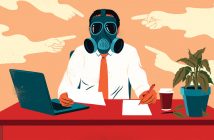Noise, agri-chemicals, silica and asbestos were the most common work-related health issues WorkSafe health issues inspectors dealt with in the first six months of last year
Noise was a cross-sector issue, with 11 per cent of 721 assessments made resulting in an enforcement notice, almost all improvement notices.
Agri-chemicals were targeted because of issues raised by the Hazardous Substances and New Organisms (HSNO) Compliance Survey 2015, particularly in horticulture.
More than-one third of agriculture workplace inspections discussed safe agri-chemicals use and focussed on education, with 10 out of 722 assessments resulting in enforcement notices.
Silica was most commonly raised in construction. Silica dust is likely to be generated by the cutting of bricks, blocks and concrete. It’s an issue for Canterbury rebuild workers and those in other high-density building areas.
Asbestos remains an important construction sector issue, particularly where old buildings are being demolished such as the earthquake areas of Canterbury and Wellington. Eighty-one of 451 asbestos assessments resulted in an enforcement notice, half of which were prohibition notices.
Inspectors also focussed on solvents, welding fumes, wood dust, carbon monoxide and silica as part of WorkSafe’s Clean Air campaign. Twenty-four out of 143 welding fumes assessments (17 per cent) resulted in improvement notices.
Tips to eliminate health risks
Noise
- Measure noise levels
Firstly, find out if you have a noise problem. It’s important to know what the noise levels are, where the noise comes from, and how long the workers are exposed to it. This information will help you work out the necessary risk controls.
- Eliminate or minimise noise levels
Noise can be eliminated from the workplace by replacing old noisy machinery with newer, quieter machinery. If it’s not reasonably practicable, there are other ways to minimise the hazard such as:
- Relocating noisy machinery to less populated areas
- Enclosing noisy components, reducing vibration noises by lining components with rubber
- Running noisy machinery when fewer workers are around
- Seeking specialist advice
- Hearing protection and health monitoring
If a health risk remains, supply workers with hearing protection ensuring they know why and how to use it and how to fit it properly.
Annual worker hearing tests should also be provided by the business.
Agri-chemicals
- Training and information
Ensure workers are trained in safe handling and management of hazardous substances. Make sure safety data sheets (SDSs) and other relevant health and safety information are readily available for any person using chemicals or responsible for them. SDSs are available from the importer or manufacturer.
- Personal protective equipment (PPE) and monitoring
Ensure workers who handle chemicals have appropriate and effective personal protective equipment (PPE) and understand how to use and maintain it. This includes properly fitted respiratory protective equipment (RPE) and effective personal protective clothing (PPC) that is cleaned and maintained appropriately. Some chemicals, especially organophosphates, are absorbed through the skin, so workers handling these substances must be protected from skin and eye contact. Information on PPC requirements should be provided in SDSs and individual agrichemicals product labels.
In addition, frequently monitor workers’ health and exposure levels.
- Maintain an inventory
Depending on chemical type and quantity, other actions such as designating an approved handler, obtaining a location test certificate or providing signage may be required. To work out what approved handler, test certificates and signage are needed, maintain an inventory of hazardous substance types and quantities on-site.
Silica
- If possible, eliminate silica
In abrasive blasting, for example, alternative products such as metallic shot, slag products or grit can be used instead of sand.
- Minimisation methods
Reduce dust levels by using water or dust extraction methods to redirect and collect dust from the work area. Don’t use brooms or compressed air to sweep dust or blow it away as this stirs up more dust.
- PPE and monitoring
Ensure anybody exposed to silica dust has appropriate, properly fitted respiratory protective equipment, overalls and gloves. Make sure workers understand silica risks and how to contain and protect against it. In addition, regularly monitor the health of those workers regularly exposed to silica.
Asbestos
- Have the right licence for the job
Friable asbestos removal can only be conducted by a person in charge of a business or undertaking (PCBU) with a Class A asbestos removal licence. A Class B asbestos removal licence is required if more than 10m2 of non-friable asbestos needs removing, although this can also be done by a PCBU with a Class A licence.
A licence is not required for removing up to 10m2 non-friable asbestos, but regardless of how much asbestos needs removing, PCBUs must ensure, so far as is reasonably practicable, that airborne asbestos exposure is eliminated or minimised.
- Training
Businesses must make sure all workers doing asbestos work have received appropriate training and instruction to do the job safely, and do not put themselves or others at risk. Workers conducting licensed asbestos removal must attend relevant training by 4 April 2018.
Businesses must provide the necessary supervision to protect workers from health and safety risks. For workers conducting licensed asbestos removal, ensure their work is supervised by someone with the required qualifications and experience.
- PPE and monitoring
It is essential in an asbestos environment that the workers’ PPE minimises asbestos fibres entering their breathing zone.
WorkSafe offers fact sheets, information and guidance on these and other work-related issues on its website http://www.worksafe.govt.nz/worksafe




